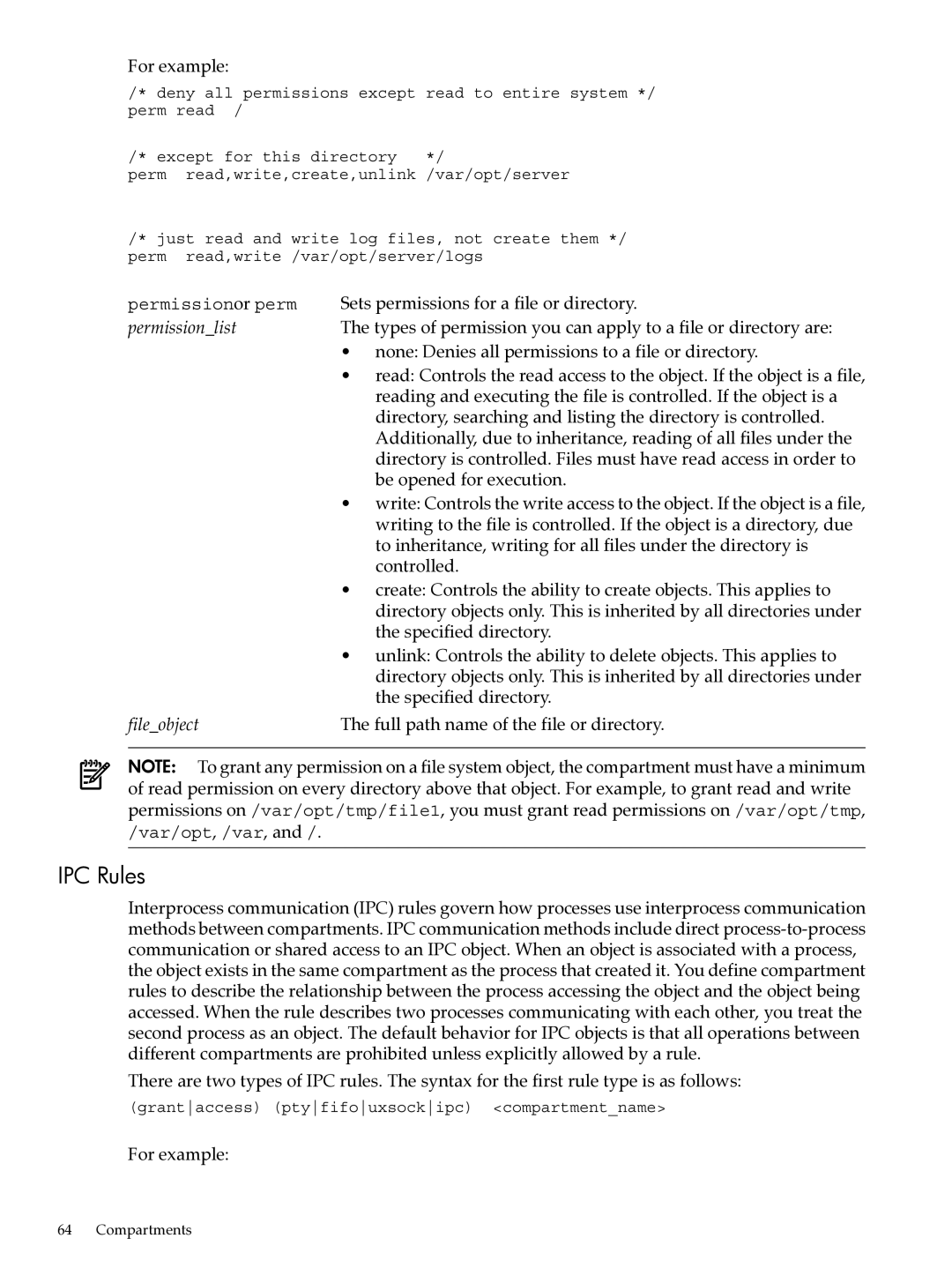
For example:
/* deny all permissions except read to entire system */ perm read /
/* except for this directory | */ |
perm read,write,create,unlink | /var/opt/server |
/* just read and write log files, not create them */ perm read,write /var/opt/server/logs
permissionor perm | Sets permissions for a file or directory. |
permission_list | The types of permission you can apply to a file or directory are: |
| • none: Denies all permissions to a file or directory. |
| • read: Controls the read access to the object. If the object is a file, |
| reading and executing the file is controlled. If the object is a |
| directory, searching and listing the directory is controlled. |
| Additionally, due to inheritance, reading of all files under the |
| directory is controlled. Files must have read access in order to |
| be opened for execution. |
| • write: Controls the write access to the object. If the object is a file, |
| writing to the file is controlled. If the object is a directory, due |
| to inheritance, writing for all files under the directory is |
| controlled. |
| • create: Controls the ability to create objects. This applies to |
| directory objects only. This is inherited by all directories under |
| the specified directory. |
| • unlink: Controls the ability to delete objects. This applies to |
| directory objects only. This is inherited by all directories under |
| the specified directory. |
file_object | The full path name of the file or directory. |
NOTE: To grant any permission on a file system object, the compartment must have a minimum of read permission on every directory above that object. For example, to grant read and write permissions on /var/opt/tmp/file1, you must grant read permissions on /var/opt/tmp, /var/opt, /var, and /.
IPC Rules
Interprocess communication (IPC) rules govern how processes use interprocess communication methods between compartments. IPC communication methods include direct
There are two types of IPC rules. The syntax for the first rule type is as follows:
(grantaccess) (ptyfifouxsockipc) <compartment_name>
For example:
64 Compartments
